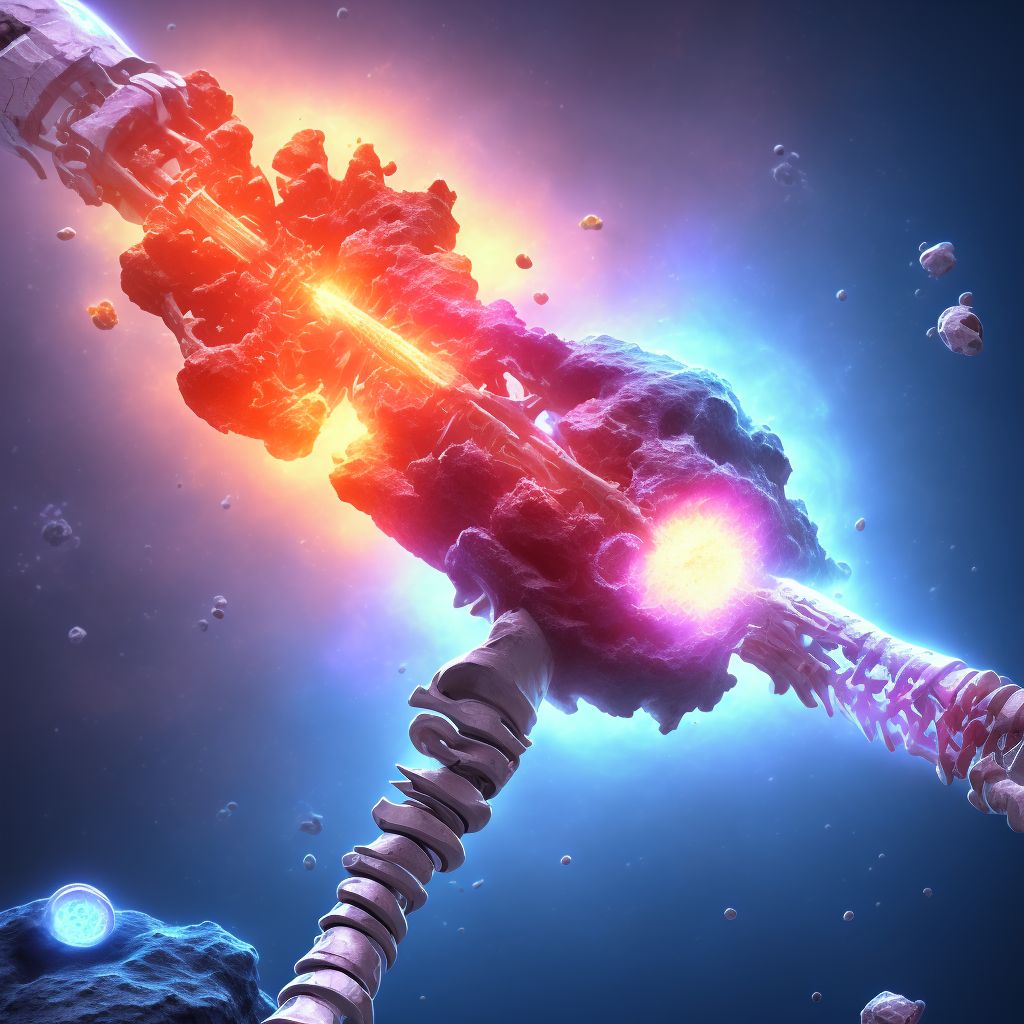
Displaced segmental fracture of shaft of right tibia, subsequent encounter for closed fracture with routine healing Save
ICD-10 code: S82.261D
Disease category: S82.261: Displaced segmental fracture of shaft of right tibia
Displaced Segmental Fracture of Shaft of Right Tibia: Understanding the Subsequent Encounter for Closed Fracture with Routine Healing
A displaced segmental fracture of the shaft of the right tibia is a severe injury that requires immediate medical attention. This type of fracture occurs when the tibia bone is broken into multiple segments, causing misalignment and potential damage to surrounding tissues. In this article, we will dive into the subsequent encounter for a closed fracture with routine healing, providing valuable insights into the healing process and what to expect during recovery.
Upon initial diagnosis, a displaced segmental fracture of the shaft of the right tibia requires proper alignment and immobilization. This is usually achieved through the application of a cast or a splint, which holds the broken bone fragments in place, allowing them to heal naturally. It is important to consult with a healthcare professional to ensure the appropriate treatment plan is followed.
During the subsequent encounter for a closed fracture with routine healing, the focus shifts to monitoring the progress of the healing process. Regular medical check-ups and imaging tests, such as X-rays, are commonly performed to assess bone alignment and track the development of new bone tissue. These follow-up visits are crucial in ensuring that the fracture is healing correctly.
- Rest and Restricted Weight-Bearing: As the fracture heals, it is essential to avoid activities that put excessive stress on the injured leg. Patients are often advised to rest and avoid putting weight on the affected leg until instructed otherwise by their healthcare provider.
- Physical Therapy and Rehabilitation: Once the fracture has started to heal, physical therapy may be recommended to regain strength, flexibility, and mobility. This may involve exercises and treatments tailored to the patient's specific condition and requirements.
- Pain Management: Managing pain is an integral part of the healing process. Healthcare professionals may prescribe pain medications or suggest non-pharmacological methods to alleviate discomfort, such as applying ice packs or using over-the-counter pain relief gels.
It is important to note that every patient's healing process may vary, and the timeline for recovery can range from several weeks to several months. Compliance with medical advice, maintaining a healthy lifestyle, and following any prescribed physical therapy routines are crucial for optimal healing.
In conclusion, a displaced segmental fracture of the shaft of the right tibia is a significant injury that requires proper medical treatment and ongoing monitoring. By understanding the subsequent encounter for a closed fracture with routine healing, patients can have a better idea of what to expect during their recovery journey. Remember to consult with a healthcare professional for personalized advice and guidance throughout the healing process.
Treatment of Displaced segmental fracture of shaft of right tibia, subsequent encounter for closed fracture with routine healing:
Treatment Options for Displaced Segmental Fracture of Shaft of Right Tibia
A displaced segmental fracture of the shaft of the right tibia can be a significant injury that requires proper treatment and care. This type of fracture is characterized by multiple breaks in the tibia bone, leading to a fragmented segment that is displaced from its original position. If you have experience...
To see full information about treatment please Sign up or Log in